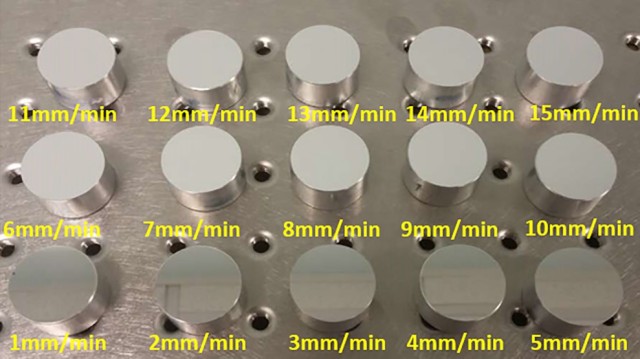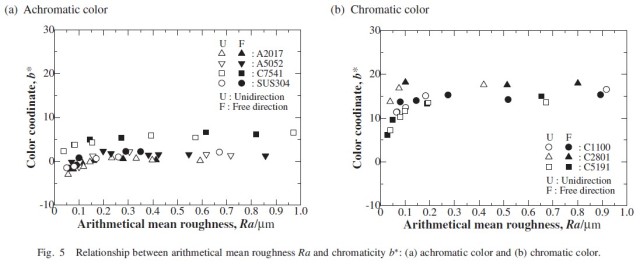Microfacet multiple scattering approximations change content authoring – both for good (energy conservation) and for not so good (saturation changes with roughness). I was curious how current microfacet multiple scattering techniques compare against a measured real-life reference. After all, real-life surfaces aren’t perfectly isotropic, they have small scratches causing diffraction which can’t be modeled by geometrical optics etc. So maybe color saturation changes shouldn’t be there?
Unfortunately there isn’t much data for measurements of the same materials with varying roughness. According to Wenzel Jakob they have some differently machined metals in queue for scanning and will include them in they awesome RGL material database, but for now I could only find data in studies made for the material manufacturing industry.
Let’s start with the state of the art approximation of microfacet multiple scattering from [Turquin]. We can see that with increasing roughness it conserves energy and color becomes more saturated:

And here’s a photo of differently machined aluminium alloy from [Li 2018] which nicely fits multiple scattering energy conservation approach:

Surface roughness increases with increased feed rate
[Yonehara 2004] has some more detailed measurements of surface properties. Interestingly with increasing roughness color in real measurements is getting a bluish tint instead of simply gaining saturation as in microfacet multiple scattering models.
“In all specimens, as the Ra became smaller, a tendency was seen that the reflectance in the measured wavelength region became lower. In particular, the drop in reflectance in the long wavelength side was significant in comparison with that of the short wavelength side. (…) In other ways, for the case where the roughness plane is the same, in comparison with the short wavelength side, the light of the long wavelength side causes specular reflection more easily”

References
[Turquin] – “Practical multiple scattering compensation for microfacet models”
[Yonehara 2004] – “Experimental Relationships between Surface Roughness, Glossiness and Color of Chromatic Colored Metal”

Reblogged this on Big Life Pixels.
LikeLike
Hi, please guide me, what is micro flakes model?
LikeLike